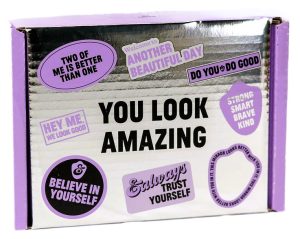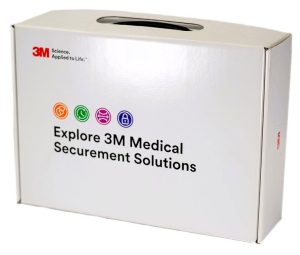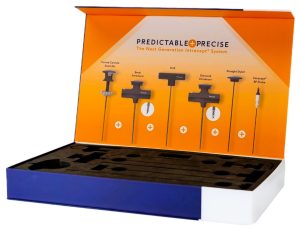Print terminology can be confusing and overwhelming for those who are just starting out in the packaging, print, or marketing industries. With all of the technical terms and jargon, it can be difficult to keep track of what each one means. In this guide, we will provide an overview of some of the most common printing terms used today so that you can easily understand what is being talked about when discussing packaging artwork. By understanding these key concepts you’ll be able to better communicate with your print or packaging expert and get exactly what you need from your printed materials.
Bleed
A printing process that extends the image beyond the crop marks on the page to create a seamless finish. The amount of bleed is typically determined by how much extra space is needed – usually between 0.125″ and 0.25″ – depending on the size of the artwork as well as its desired effect. To achieve a bleed, you need to make sure they have an adequate amount of ink coverage across all elements of their design, ensuring that any text or graphics do not get lost off the edge of the page.
Digital Printing
Digital printing is a type of printing process that works directly from digital files without any need for printing plates. The digital press utilizes digital technology to accurately reproduce images through the direct transfer of data from a computer to a printer. Digital presses are able to produce extremely detailed and vibrant prints with a wide range of colors, tones, and textures. The sharp resolution and level of detail achieved by these machines make them perfect for printing everything from photographs to text documents.
Embossing / Debossing
Embossing is a printing technique that involves pressing an image into paper or other materials so that the design appears raised. It can be used to create a decorative effect, or to make text or images more visible or prominent. Debossing is the opposite of embossing: instead of raising an image from the paper surface, it presses it down so that it appears indented.
Foiling
Foiling is a process of applying metallic foil to the surface of items such as paper and fabrics. The heated tool (die) used during the foiling process melts the foil that adheres to the material creating a unique and eye-catching finish.

Laminating
Laminating is the process of adding a thin, yet sturdy, protective layer to your artwork. This layer helps to keep your artwork safe from external factors such as dirt, dust, water, and fading caused by exposure to sunlight or other light sources. Lamination can be done in either a matte or glossy finish, and sometimes a unique tactile element can be achieved through soft touch lamination which has a velvety feel. Additionally, lamination protects high ink coverage jobs from set-off (ink transferring from one sheet to another) and chipping (flaking off at the edges).
Lithographic Printing
Lithographic printing is a type of printing process that uses plates and ink to transfer text and images onto a substrate, such as paper or fabric. This form of printing dates back to the early 19th century.

Proofing
Proofing artwork is an essential process in the printing industry which involves examining a sample of the finished product to make sure it meets a customer’s specifications and expectations. It involves careful review of the artwork, ensuring that all elements are accurate such as color, font, image quality and size, placement, text and layout. Through this process, any potential errors or mistakes can be identified ahead of time and rectified prior to the full print run being produced.
Spot UV
Spot UV is a printing technique that uses a special type of coating to create a glossy effect on paper. In this technique, ultraviolet light is used to selectively coat the desired area or “spot” of the printed material with a clear gloss varnish. This creates an eye-catching effect as it brings attention to certain elements such as logos, text, images and other designs on the printed material. It is important to note that this technique requires coated paper in order to achieve the best results.
Trim
Trim is a print term referring to the edges of a printed piece. These are the lines that are cut to produce the finished size, cutting through any bleed area present in the design to ensure a continuous edge. Trim is an essential part of ensuring a printed piece has professional and attractive dimensions and can be used for both small runs and large-scale printings.
CMYK
CMYK printing, also known as four-color process printing, is a type of printing that uses a combination of four colors—cyan, magenta, yellow and black—to reproduce artwork on paper or other materials. It’s the most common method used in commercial printing, as it’s able to create the widest variety of color combinations and shades. CMYK printing works by blending the four colors to create millions of hues, tints and shades.

Coated Paper
Coated paper is a type of special paper with a smooth and glossy finish. This type of paper is highly sought after by printers for its improved reflectivity, ink coverage, and stability, which results in top-tier print quality. Compared to other types of paper, coated paper has superior resistance to abrasion, heat, water damage and light fading. Additionally, the smoother surface allows for much greater detail when printing images or photos. The paper can be coated on one side (C1S) or coated on both sides (C2S).
PMS
The Pantone Matching System (PMS) is a standardized system of color reproduction that printers utilize to ensure consistently accurate and vivid colors no matter the medium. It consists of spot color inks, each identified by a unique combination of numbers and letters, which are used to communicate precise color specifications across different devices and technologies. This system is incredibly useful for achieving consistent branding across multiple packages, advertisements or other media outlets.

Die-Line
A vector graphic document that contains the shape outline of a custom design. It is often used as a template for die-cutting operations in the printing industry, in order to achieve precise and intricate cuts on various materials such as paper, cardstock, vinyl or other substrates. Die-line files are typically created with popular vector editing applications such as Adobe Illustrator.
Print Proof
Print proof is a printed, physical representation of an artwork that is used to evaluate the final outcome of a printing project. It allows designers and printers to assess the accuracy and quality of the colors, text, images, and overall design before committing to a larger print run. A print proof provides an accurate representation of how the image will look after being printed on different types of paper stock, indicating if there are any issues with color accuracy or registration that need to be addressed. It also helps to ensure that all elements within the artwork are properly aligned and positioned in accordance with the desired outcome. Print proofs are invaluable tools for verifying the details of a project prior to spending time and money on a full production run.
Aqueous Coating
Aqueous Coating is a water-based protective layer applied to printed materials to help preserve the ink and paper. This clear coating has become popular in graphic design due to its versatility in protecting against scuffs, abrasions, smudges, spills, moisture and UV damage.
Print terminology in packaging can be overwhelming, but it is important to understand the basics. After reading this blog, you should have a better understanding of the terminology which should help you on your next print project.


